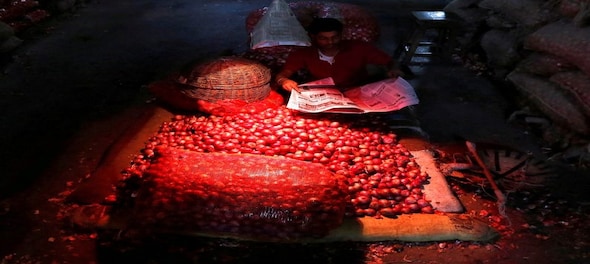
Across the country, soaring onion prices left households and restaurants feeling the pinch. But in Chennai, inflated prices have left restaurateurs and patrons with more reasons for tears. The reason: Chennai’s humble sambar, and its key ingredient: small onions — known colloquially as sambar vengaayam.
Over the weekend, red onion prices in Chennai began inching towards Rs 80 per kilogram, while baby onions began touching an unimaginable Rs 100 per kilogram. The result: these prices have begun eating into margins at the city’s restaurants. While cutting down the quantity of sambar seems to be the first option at hand for these restaurants, restaurateurs aren’t exactly in a hurry to take that step.
Chennai’s Sangeetha chain of restaurants has chosen to absorb the price-hike and let margins take a bit of a beating, after contending with a catch-22 scenario.
"These prices impact our business simply because we are not in a position to increase prices on the menu, while having to maintain the quality of our dishes,” says P Rajagopal, a partner at the restaurant chain who adds that a rise to nearly Rs 75 from the previously prevailing rate of Rs 20 per kilogram, was an unforeseen spike.
Rajagopal adds: "Our procurement and preparation costs are usually between 7 and 8 percent of our total sale value. However, this has increased to 14 percent since the price-hike, which is becoming a concern for us.”
Aside of sambar, the dishes that have now turned a tad less profitable for South Indian restaurants include the popular karra chutney (red chutney known for its spicy flavour) with its onion base, which is usually had as an accompaniment to Idlis and Dosas at breakfast.
Sangeetha is hoping to rein in its falling margins by carefully avoiding wastage, and keep costs in check. The hope now is that the decent monsoon this year would lead to good produce for the months ahead, and bring prices back in check.
However, should sky-high prices remain, the restaurant is looking to control prices of South Indian meals and the breakfast menu, which are hot favourites, by hiking prices on its Specials, which usually comprise North Indian and Chinese dishes.
Some other restaurants though, continue to face issues with skyrocketing costs, across menus. “Irrespective of the cuisine, tomatoes and onions form the base of almost every dish that we serve,” says Akshay Bafna, founder of the Pakwan Group of restaurants, “Unlike dairy, these ingredients have no substitutes and finding an alternative becomes a challenge. It’s a toss-up between increasing menu prices or cutting down on quality.” Obviously, no restaurateur wants to do either, although Bafna feels he may be left with no other option but to hike prices, should the prevailing rates persist.
What some restaurants are managing to do is to subtly reduce the number of chutneys and the sambar that is served at breakfast. As supplies continue to dwindle, baby onions are facing their worst price-hike in a while with skyrocketing rates. Sambar is the sufferer, chutney isn’t far behind. For the moment though, Chennai’s restaurateurs and their South Indian fare are playing the wait and watch game.
First Published: Nov 19, 2019 3:29 PM IST
Check out our in-depth Market Coverage, Business News & get real-time Stock Market Updates on CNBC-TV18. Also, Watch our channels CNBC-TV18, CNBC Awaaz and CNBC Bajar Live on-the-go!



